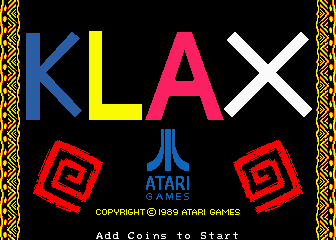Klax (version 6)
Game Information
| manufacturer | Atari Games |
| year | 1990 |
| cloned by | klax4 klax5 klax5bl klax5bl2 klax5bl3 klaxd2 klaxj3 klaxj4 klaxp1 klaxp2 |
| genre | N/A |
| downloads | 288 |
Screenshots










Download Details
| split set | klax.zip 285.04k |
| merged set | klax.7z 570.38k |
| standalone set | klax.7z 253.16k |
| artwork | klax.zip 1.13m |
Driver Details
| source | atari/klax.cpp |
| status | good |
| emulation | good |
| savestate | supported |
Screen Details
| display | screen |
| type | raster |
| orientation | horizontal |
| width | 336px |
| height | 240px |
| refresh | 59.92mhz |
Input Details
| player | 1 |
| type | joy |
| buttons | 1 |
| directions | 4 |
| player | 2 |
| type | joy |
| buttons | 1 |
| directions | 4 |
Chipset Details
| name | Motorola MC68000 |
| clock | 6.83mhz |
| name | Speaker |
| clock | N/A |
| name | OKI MSM6295 ADPCM |
| clock | 873.91khz |
ROM Details
| name | size | crc |
|---|---|---|
| 136075-6006.3n | 64.00k | e8991709 |
| 136075-6005.1n | 64.00k | 72b8c510 |
| 136075-6008.3k | 64.00k | c7c91a9d |
| 136075-6007.1k | 64.00k | d2021a88 |
| 136075-2010.17x | 64.00k | 15290a0d |
| 136075-2009.17u | 64.00k | 6368dbaf |
| 136075-2012.12x | 64.00k | c0d9eb0f |
| 136075-2011.12u | 64.00k | e83cca91 |
| 136075-2014.17y | 64.00k | 5c551e92 |
| 136075-2013.17w | 64.00k | 36764bbc |
| 136075-1015.14b | 64.00k | 4d24c768 |
| 136075-1016.12b | 64.00k | 12e9b4b7 |
| 136075-1000.11c.bin | 279.00b | fb86e94a |
| 136075-1001.18l.bin | 279.00b | cd21acfe |
| 136075-1002.8w.bin | 279.00b | 4a7b6c44 |
| 136075-1003.9w.bin | 279.00b | 72f7f904 |
| 136075-1004.6w.bin | 279.00b | 6cd3270d |